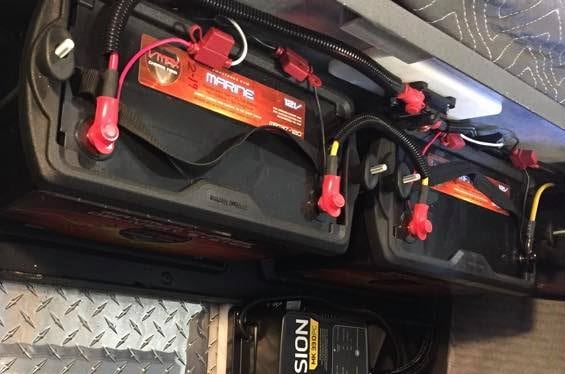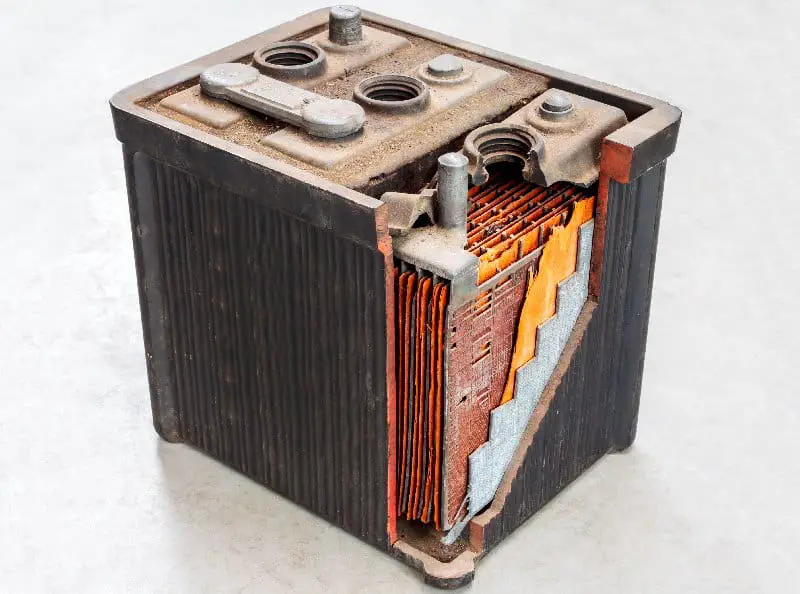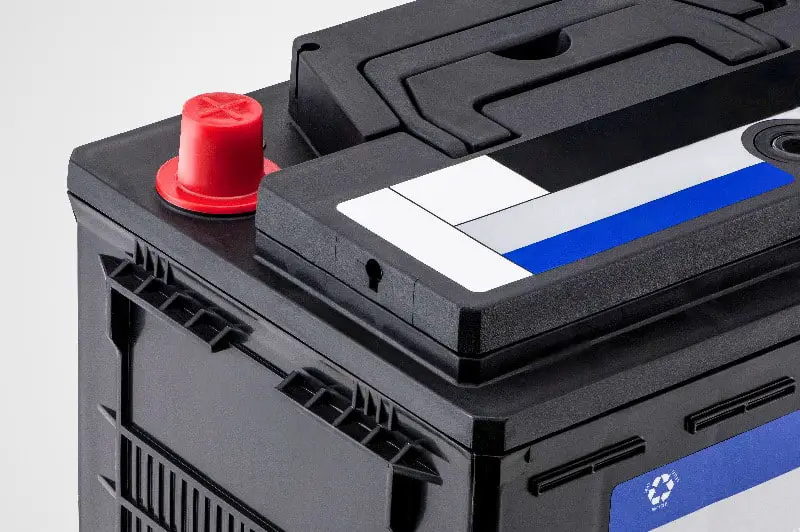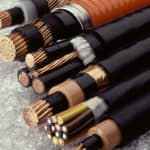Battery life comes down to one property, cycles. Different types of batteries have a different number of cycles based on many different factors. The most significant factor is the depth of discharge(DOD), aka the percentage of power drawn from the battery. Don’t misunderstand that there are other factors like charging, charging rate, discharge rate, storage, and temperature can all affect the life of your batteries.
Another lesser factor that we will cover is aging. However, a well maintained and stored battery will perform against the effects of time. So let’s start our discussion and learn about the different types of batteries and their performance traits.
Note: most links in this article are Amazon.com Affiliate links, see Affiliate Disclosure, thank you.
Preface:
I believe it has become imperative more than ever to take a step further into the world of various battery types, brands alongside their typical and unique characteristics. Finding a battery type that not only satisfies your needs and a little more but also fits into your budget seamlessly will be made easy once you digest the content of this article.
These battery types should generally possess some essential qualities which I intend to discuss in this article succinctly. Bear in mind that you should make your battery choice based on your intended purpose and expected output you desire.
Batteries are primarily built to store electricity, yet the mechanism by which they achieve this varies. A battery is further classified and named based on the internal components embedded in it. Highlighted below are the broad types of battery available on the market in deep cycle variants:
Click here to read our Review of the Top Electric Trolling Motor Batteries?

Absorbed Glass Mat (AGM) Battery:
This was primarily developed to ensure power, safety, and reliability when in use. It utilizes a Boron-Silicate glass mat tightly packed in between plates without any liquid. The glass mat already absorbs about 95% of the electrolyte through capillary action, making it spill-proof. Usually, an AGM battery should last between 4 to 7 years without worries. This yield should provide you 90% of the rated amp-hours if you use 50% of the battery’s power for 370 cycles (times).
Typical AGMs support fast charge up to 98% charged level, self-discharge at about 1% to 3% per month, and last longer than wet batteries. East Penn Manufacturing (DEKA), Vmax Battery and Oddysey are well known for making AGMs that are vibration resistant, support fast and full charge as well as last longer. AGMs are sealed and typically maintenance-free. Always remember, good maintenance begins with a compatible trick charger, aka battery maintainer.
Gel Cell Battery:
With a suspended electrolyte, this battery type is considered to be quite similar to the AGM. The electrolyte, in this case, is “gelled” by the addition of Silica Gel, which turns the electrolyte into a solid mass, making it almost impossible for it to spill even if it falls. It would be best if you charged at a slower rate to prevent gas build-up in the system capable of wreaking havoc to the system. Even though Gel Cell is more costly than AGMs, it possesses a slower discharge rate coupled with its ability to withstand higher ambient temperature.
Gel Cells typically last between 2 to 5 years. Where a Gell Cell shines is the total cycles. At 50% state of discharge, a gel cell should run 1000 cycles and still have 90% of the stated amp-hour rating.
However, the major setback of the Gel Cell is that it has a sensitive charge profile – the correct charger must be used to avoid premature failure. You can do well to ask the seller for the appropriate charger when purchasing one. Trojan Battery and Deka have done well in producing superb-performing Gel cells over the years.

Flooded Battery:
This battery type is by far the most commonly used in history due to its low price. Because of the price, it still makes this type of battery a viable option for the casual user. A typical flooded lead-acid battery consists of lead plates, electrolytes, and plate separators.
When using this battery type, a high level of maintenance must be practiced since it’s not sealed. Gases produced when charging include hydrogen gas, which can be quite toxic and explosive if not vented. Evaporation of electrolytes through the vents can lead plates to come in contact with the atmosphere, which leads to corrosion.
Shedding is another common issue with flooded lead-acid batteries. In the simplest of terms, shedding is when pieces of your lead plates break off and fall to the bottom of your battery. It is hard to detect the start of shedding because the voltage will remain constant, but the capacity (in amp-hours) will slowly drop.
Manufacturers say 6-48 months is the expected lifespan of a flooded battery, and a normal warranty is 12 months. Flooded batteries are rated for 200 cycles at 50% depth of discharge and still have 90% of the stated amp-hour rating. However, we see a huge loss of cycles at 50% DOD in flooded batteries, so we recommend using 20% of the amp-hour rating, and you should get 300 cycles.

I am running two flooded lead-acid Trojan Batteries, model 1275, and I am well over five years, under 300 cycles using 20% capacity with no noticeable drop in performance.
Caution: Electrolyte (Battery acid) can leak, ventilate well, and always follow watering instructions before and after charging.

Lithium Battery:
Did you even know that a lithium battery can last up to ten times as long as a lead-acid battery? In recent times, I have observed that there has been a gradual shift to the use of lithium batteries over lead-acid. The reasons for this observed shift are not hard to ascertain.
Depth of discharge is a factor with any battery, but with lithium, you can discharge 100% of the rated capacity without damaging the battery or voiding the warranty. No matter what battery type, every battery will have a longer lifespan if you discharge it less on each cycle.
The total cycles for normal use are well over 3000. Many people with daily use of less than 50% battery capacity are reporting 5000 or more charge cycles. Since those batteries were built, battery technology has advanced, we could see more cycles out of today’s batteries.
Weight is our final game-changer, the average drop-in weighs just over 30 pounds. Comparing a lithium battery to a 100 AH AGM battery, it is less than half the weight of a 70 pound AGM.
There are some notable downsides, starting with price. A high-quality Lithium battery will cost you three times as much as an AGM battery. The price can be easy to justify as a long-term investment. If you buy a battery today, it will still be going strong in ten years with a warranty.
You need to be sure the battery meets your performance needs. Some batteries are limited to how many amps they can discharge and charge. To get greater voltages, you need to buy that voltage or wire your batteries in series. Not every lithium battery BMS can be wired in series, so be sure to check your spec sheet.
Most lithium batteries can be affected by aging (time), but the number of years is so many in most cases, it will outlast your motor system.
For these reasons, lithium batteries are fast becoming a favorite for Anglers.
How Long Does A Battery Last?
AGM Battery – 370 cycles
Gel Cell Battery – 1000 cycles
Flooded Battery – 200 cycles
Lithium Battery – 3000 cycles
The data is manufacture’s averages for 50% DOD
Click here to read our review of Trolling Motor Batteries
Final thoughts:
Determining how long your deep cycle batteries last depends on how you use it. If you only discharge 20% of your battery’s total amp-hour rating, you can expect to exceed the manufactures cycle rating. However, if you use 80% of your battery’s amp-hour rating, you will dramatically reduce your battery’s total cycles. Reduced cycles will mean a shorter overall battery life.
On a final note, having reviewed all battery types as seen above sufficiently, I am convinced that you are more knowledgeable about batteries. Feel free to decide whichever one of them suits your needs.
Click here to read our Review of the Top Electric Trolling Motor Batteries?
Resources:
http://www.dekabatteries.com/assets/base/0139.pdf
https://battlebornbatteries.com/wp-content/uploads/2018/03/BB10012-Cut-Sheet.pdf



